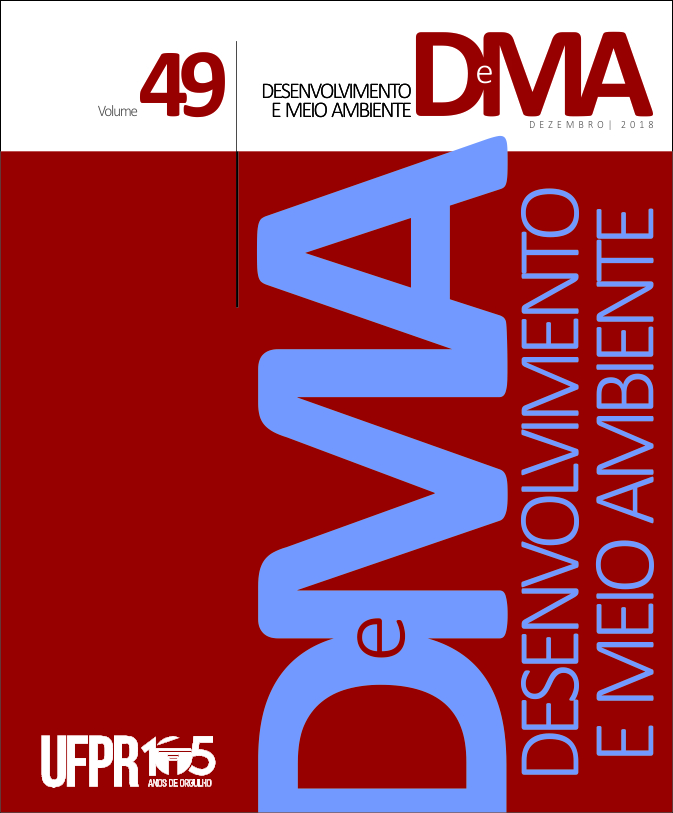Changes socioeconomic and environmental result of public policies socioeconomic development in the northeast coast of Pará, Brazil
DOI:
https://doi.org/10.5380/dma.v49i0.55128Keywords:
public policies, coastal municipalities, beachesAbstract
From the second half of the twentieth century, the prairie territories of the fishing communities in the coastal zone of the State of Pará Northeast began to receive public policies for socioeconomic development. Generating strong anthropy in the relationship between socioeconomic and environmental aspects. This study aimed at analyzing the main socioeconomic and environmental changes resulting from public investments in road expansion, urbanization and beach tourism on the beaches of Atalaia (Salinópolis), Ajuruteua (Bragança) and Crispim (Marapanim), beginning in 1960. The method was reviewed bibliography, selection of risk areas on the Atlantic coast of Pará, on-site visits, 115 personal interviews (exploratory and descriptive) and data analysis. The results indicated as environmental change the replacement of vegetation and dunes for civilian buildings (Q.3 - fields between dunes: 61.8%, dunes: 21.7%, mangrove: 11.3%, Q.7 - trade / services: 66.1%, 2nd residence: 17.40%, residence: 16.5%). In the social area, there was a replacement of fishing spaces for tourism urbanization (Q.2 - purchased: 47% and occupied: 40.9%). In the economy there was a substitution of traditional fishing activities for tourism (Q.7 - trade/services: 66.1% and animal extractivism: 0%). The negative impacts generated have implications on the lack of urban infrastructure (Q.8 - lack of public services: 72.3%), coastline retreat (Q.8 - coastal erosion: 17.4%), and poor service provision quality to support tourist activity (Q.9 - service provision: 52.2%). It is concluded that the current problematic situations (environmental pollution, coastal erosion, supply deficiency and tourist services) are consequences of the socio-spatial occupation and formation process developed by the public power, which, in order to generate socioeconomic development, disregarded the legal systems for preserving the border promoting urban expansion and the development of bathing tourism, without planed and adequate infrastructure, generating negative impacts that hinder the socioeconomic development of the region.
Downloads
Published
How to Cite
Issue
Section
License
Copyright on works published in this journal rests with the author, with first publication rights for the journal. The content of published works is the sole responsibility of the authors. DMA is an open access journal and has adopted the Creative Commons Attribution 4.0 Not Adapted (CC-BY) license since January 2023. Therefore, when published by this journal, articles are free to share (copy and redistribute the material in any medium or format for any purpose, even commercial) and adapt (remix, transform, and create from the material for any purpose, even commercial). You must give appropriate credit, provide a link to the license and indicate if changes have been made.
The contents published by DMA from v. 53, 2020 to v. 60, 2022 are protected by the Creative Commons Attribution-NonCommercial-NoDerivatives 4.0 International license.
DMA has been an open access journal since its creation, however, from v.1 of 2000 to v. 52 of 2019, the journal did not adopt a Creative Commons license and therefore the type of license is not indicated on the first page of the articles.




